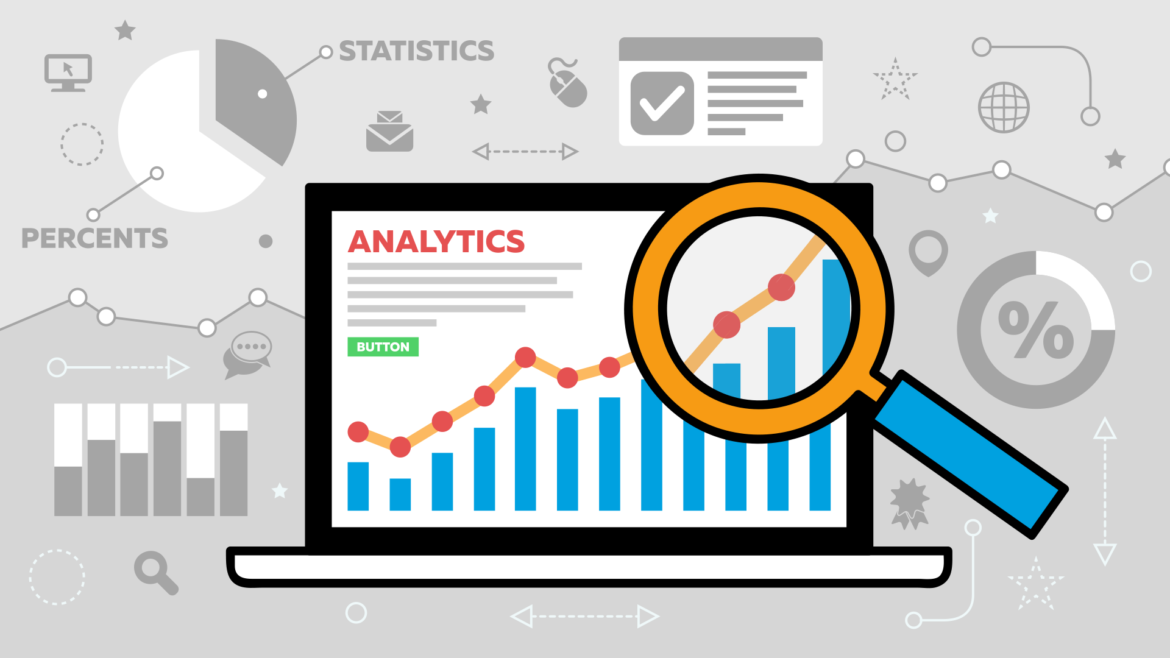In today’s digital age, data-driven decision-making is essential for the success of any online venture, and websites are no exception. By leveraging website analytics, you can gain valuable insights into your site’s performance, user behavior, and audience demographics, allowing you to make informed decisions to improve your website’s effectiveness and achieve your business goals. In this article, we’ll explore key metrics and tools for website analytics and discuss how you can use them to enhance your website’s performance and user experience.
Why Website Analytics Matter
Website analytics provide valuable data and insights that help you understand how users interact with your website. By tracking and analyzing various metrics, you can identify strengths and weaknesses, pinpoint areas for improvement, and optimize your website to better meet the needs and preferences of your audience. Here are some reasons why website analytics matter:
- Understanding User Behavior: Analytics reveal how users navigate your website, what content they engage with, and where they drop off. This insight allows you to optimize user flows, improve content relevance, and enhance overall user experience.
- Measuring Performance: Analytics provide quantitative data on key performance indicators (KPIs) such as traffic, conversions, and engagement metrics. By monitoring these metrics, you can assess the effectiveness of your marketing efforts, track progress towards your goals, and identify opportunities for growth.
- Identifying Trends and Patterns: Analytics help you identify trends, patterns, and correlations in user behavior over time. By tracking changes in metrics such as traffic sources, device usage, and conversion rates, you can adapt your strategies accordingly and stay ahead of the curve.
- Informing Decision-Making: Armed with data-driven insights, you can make informed decisions about website design, content strategy, marketing campaigns, and resource allocation. Analytics help you prioritize initiatives, allocate resources effectively, and focus on initiatives that deliver the highest return on investment (ROI).

Key Metrics to Track
- Traffic Sources: Monitor the sources of your website traffic to understand where visitors are coming from. Key sources include organic search, direct traffic, referral traffic, social media, and paid advertising. Analyze traffic sources to identify channels that drive the most visitors and optimize your marketing efforts accordingly.
- Page Views and Sessions: Track the number of page views and sessions on your website to measure overall traffic volume and engagement. Analyze trends in page views and sessions to identify popular content, assess user engagement levels, and uncover opportunities for content optimization and promotion.
- Bounce Rate: Bounce rate measures the percentage of visitors who leave your website after viewing only one page. A high bounce rate may indicate issues with content relevance, user experience, or site performance. Analyze bounce rate by page, device, and traffic source to identify areas for improvement and reduce bounce rates.
- Conversion Rate: Conversion rate measures the percentage of visitors who complete a desired action, such as making a purchase, filling out a form, or signing up for a newsletter. Track conversion rates to assess the effectiveness of your calls-to-action, landing pages, and conversion funnels. Identify barriers to conversion and optimize your website to improve conversion rates over time.
- Average Session Duration: Average session duration measures the average amount of time visitors spend on your website during a single session. Analyze session duration to gauge user engagement and interest levels. Longer session durations may indicate higher engagement, while shorter durations may suggest content issues or navigation barriers.
- Exit Pages: Exit pages are the last pages that visitors view before leaving your website. Analyze exit pages to identify common exit points and potential areas of concern. Optimize exit pages by providing clear calls-to-action, relevant content, and navigation pathways to encourage visitors to explore further or take desired actions before exiting.
Popular Analytics Tools
- Google Analytics: Google Analytics is a powerful and free web analytics tool that provides comprehensive insights into website traffic, user behavior, and conversions. With features such as audience demographics, behavior flow analysis, and goal tracking, Google Analytics is a must-have tool for website owners looking to understand and optimize their online presence.
- Adobe Analytics: Adobe Analytics is an enterprise-level analytics solution that offers advanced features for tracking and analyzing website performance. With robust reporting capabilities, real-time data visualization, and predictive analytics, Adobe Analytics provides deep insights into user behavior and helps businesses make data-driven decisions to drive growth and profitability.
- Hotjar: Hotjar is a user behavior analytics tool that allows you to visualize how users interact with your website through heatmaps, session recordings, and conversion funnels. By understanding user behavior and feedback, Hotjar helps you identify usability issues, optimize user flows, and improve overall website performance.

- Mixpanel: Mixpanel is an analytics platform that focuses on user-centric metrics and event tracking. With features such as cohort analysis, retention tracking, and funnel analysis, Mixpanel helps businesses understand user behavior throughout the customer journey and optimize experiences to drive engagement and retention.
- Heap Analytics: Heap Analytics is an automated analytics platform that captures user interactions on your website without requiring manual event tracking. With Heap, you can retroactively analyze user behavior, segment audiences, and measure the impact of website changes on key metrics, making it easy to optimize your website for performance and conversion.
In conclusion, website analytics play a crucial role in understanding and optimizing your website’s performance, user experience, and overall effectiveness. By tracking key metrics such as traffic sources, page views, bounce rates, conversion rates, average session duration, and exit pages, you can gain valuable insights into user behavior and make data-driven decisions to improve your website. With a variety of analytics tools available, including Google Analytics, Adobe Analytics, Hotjar, Mixpanel, and Heap Analytics, you have the resources you need to monitor, analyze, and optimize your website for success. Remember to regularly review your analytics data, experiment with different strategies, and iterate on your website to continuously improve performance and achieve your business objectives. By leveraging website analytics effectively, you can unlock the full potential of your website and drive meaningful results for your business.




